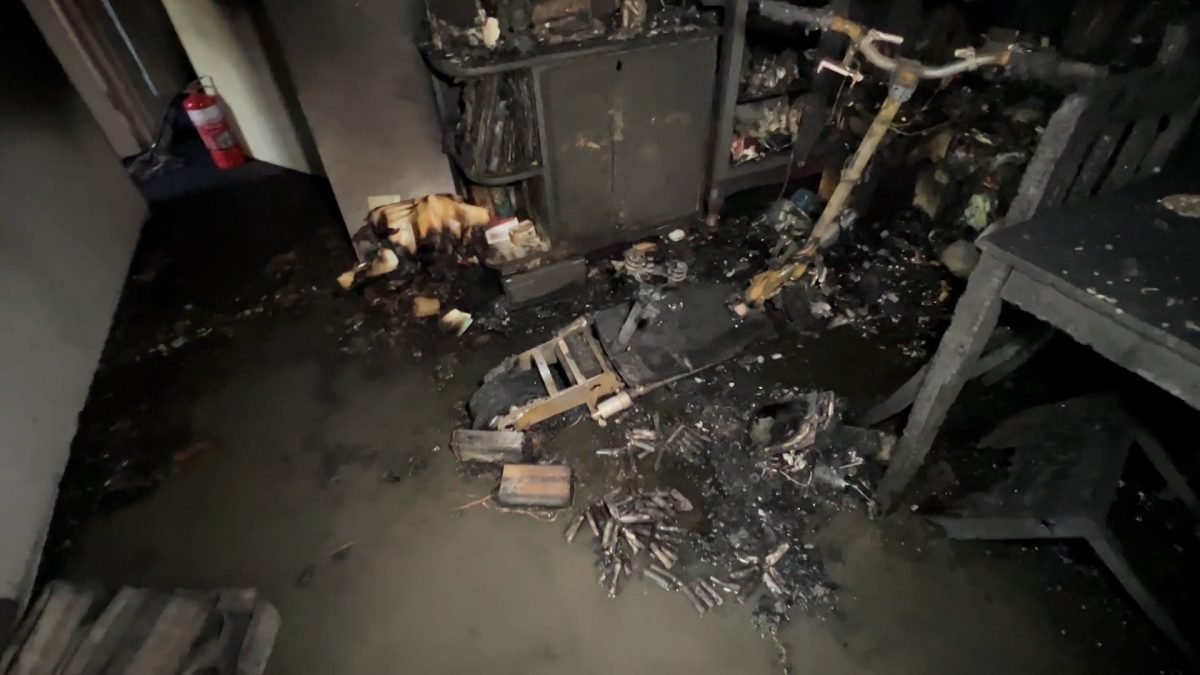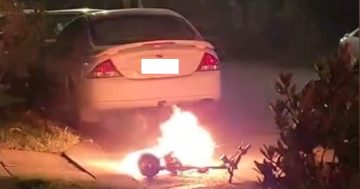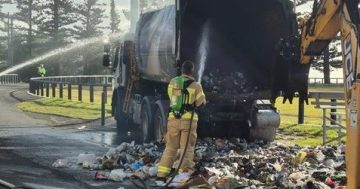
This fire in a Sydney unit block was believed to have been caused by an electric scooter left on charge while the residents slept. Photo: FRNSW
NSW firefighters are dealing with a surge in lithium battery-related fires and fear lives will be lost if the community fails to follow safety advice.
Fire and Rescue NSW (FRNSW) and the NSW Government are urging residents to be aware of the risks of using and storing lithium batteries, following a 20 per cent increase in battery-related fires or explosions in the first six months of the year.
Firefighters are also concerned that batteries are not being disposed of properly, causing fires in rubbish and waste trucks.
Many of today’s portable devices contain rechargeable lithium-ion batteries, which are lightweight, energy dense and long-lasting. They are used to power common items such as phones, tablets, powerbanks, computers, toys, appliances and tools, as well as mobility equipment such as electric bikes and scooters.
In the first six months of 2023, there were 114 lithium battery-related fires, with key items of concern being power packs and chargers, micro-mobility devices like e-bikes and e-scooters and portable power banks.
FRNSW Acting Deputy Commissioner Field Operations Trent Curtin said firefighters were responding to about three battery fires a week from in-home charging issues or incorrect disposal.
“Lithium-ion batteries, when faulty or damaged, can overheat and have the potential to explode violently, resulting in fires that can reignite once extinguished and sometimes take days to burn,” he said.
“Don’t leave lithium-ion batteries constantly on charge, don’t sleep when they’re charging and unplug them if you’re leaving home.
“I’m concerned someone’s going to die if they don’t heed the safety advice.”
According to the NSW Environmental Protection Authority (EPA) up to 95 per cent of batteries can be recycled, but NSW households only recycle 10 per cent.
Batteries should not be thrown into household bins because they contain chemicals that contaminate waste streams, pollute the environment and cause fires.
Wollongong, Shellharbour and Kiama Councils all offer locations where residents can dispose of batteries. Both ends of the battery should be covered using a non-conductive tape like clear sticky tape.
In Wollongong, residents can take dead batteries to the Community Recycling Centre at Whytes Gully, Kembla Grange. The Shellharbour Community Recycling Centre is at the Dunmore Recycling and Waste Disposal Depot and in Kiama the Community Recycling Centre is at Minnamurra Waste and Recycling Facility.
There are also dedicated recycling points available at many large retailers like Coles, Woolworths, Bunnings and Officeworks.
Products with batteries embedded in them, like mobile phones, laptops and power tools, should be disposed of at an e-waste recycling facility or e-waste drop-off event.
To find out more about safe battery disposal, visit the EPA website and to learn about how to safely charge batteries, visit the Fire and Rescue NSW website.













